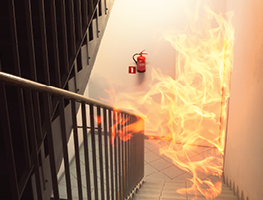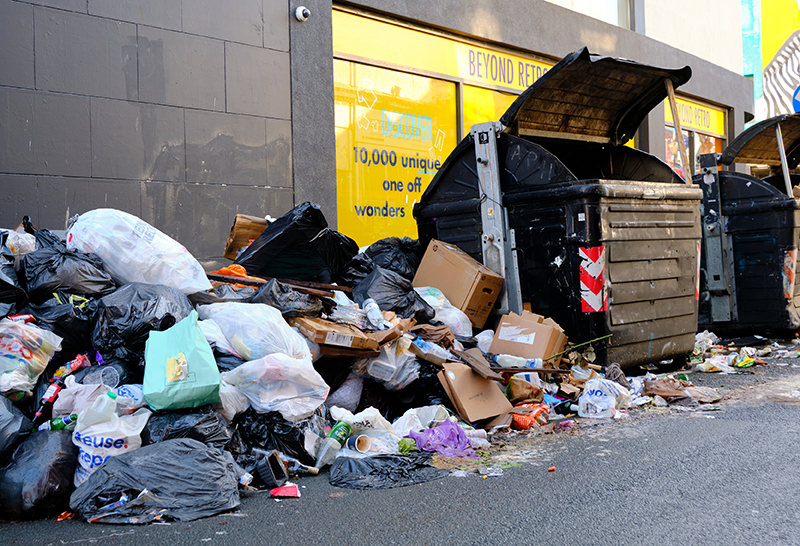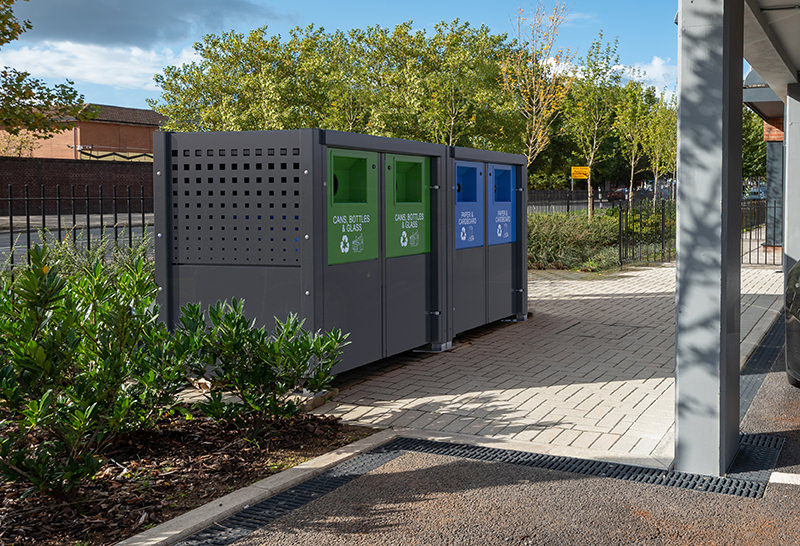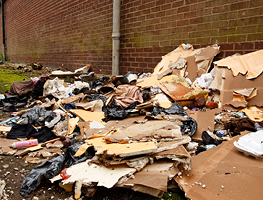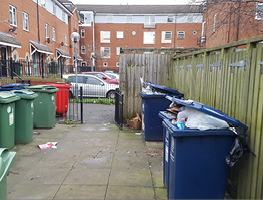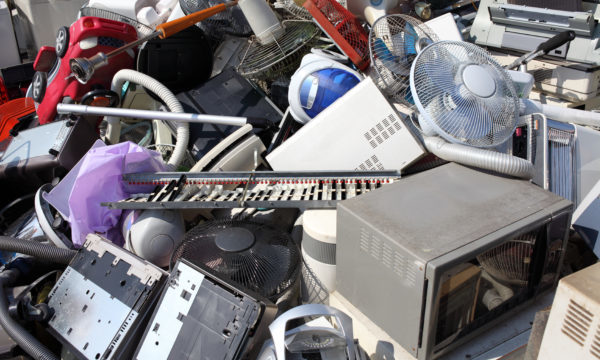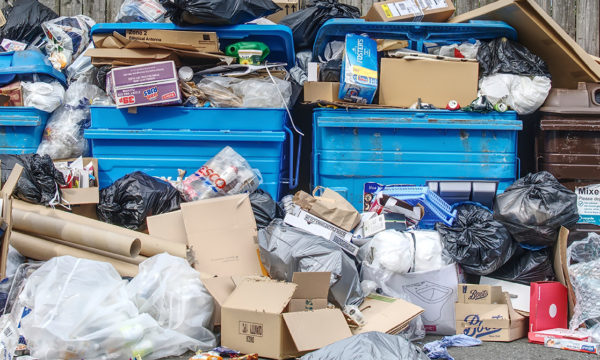Table of Contents:
Of the 1.09 million fly-tipping incidents reported to local authorities in 2021/22, fly-tipped household waste amounted to 671,000 of these. Maintaining the appearance and environmental health of communities and neighbourhoods can be hindered by communal bin areas that ultimately stop short of successfully accommodating residential requirements.
Many existing properties do not have communal bin areas that are suitable for current waste volumes, recycling separation requirements, and efficient collection frequencies. Under these circumstances, motivations to engage in impactful behaviour such as side waste and fly-tipping can be encouraged.
Why Fly-tipping Occurs and Its Impact
Fly-tipping is a heavily impactful societal issue that typically occurs from a lack of awareness and understanding of what is considered to be ‘fly-tipping’ and misconceptions about its impact on communal environments, waste management systems, and communities as a whole. It can also be heavily influenced by insufficient bin capacity before collection day, with fly-tipping then perceived as a convenient option for disposal. If an item is left as side waste, individuals might also be motivated by an illusion that it will be picked up on collection routes regardless, or someone might find use for the item.
Aside from the negative visual impact it brings, fly-tipping is environmentally detrimental and incurs significant removal expenses for local councils. From a safety perspective, the presence of side waste and bulky items, such as discarded furniture or electrical items, create fire-hazards and can contribute towards larger problems for communities by creating hot spots for crime and anti-social behaviour. This is one of the main reasons that communal bin areas have often been located out of sight.
Best Practices for Reducing Fly-tipping in Communal Bin Areas
Local authorities were forced to carry out 507,000 enforcement actions for fly-tipping in 2021/22, with current penalties ranging anywhere from an unlimited fine through to time-served in jail. While enforcement notices can be an effective tool for local authorities, ensuring best practice measures are in place is one key aspect of encouraging more positive waste management behaviour in communal environments.
With the right investments in effective facilities, overcoming potential shortcomings can be a realistic achievement and ultimately help to successfully reduce side waste opportunities, eliminate associated fire risk issues, and improve the public health and overall well-being of tenants and staff. Establishing a communal bin area that acts as a valuable resource allows them to be placed in more prominent locations that encourage use, without concerns over fly tipping and its impact on the environment.
- Ensure that the appropriate waste and recycling capacity is provided for all users between bin collections. Avoiding individual bins and installing the largest available bin sizes for the communal space will help to help overcome shortcomings, as well as reducing the required footprint and collection expenses.
- Utilising accessible waste and recycling storage locations for users is a fundamental requirement. It can be achieved by placing bins within 35m of a building on a regularly-accessed route that offers good surveillance to ensure more responsible use of the communal bin area.
- Ensuring the bin area is easily serviceable for bin crews involves effective planning and should be prioritised to make sure that collection can be facilitated without complication, as this will be crucial to maintaining the consistent quality and appearance of the environment.
- Providing secure storage of waste and recycling bins helps to restrict unauthorised moving, which can lead to safety issues and increased fire risk if the recommended fire-safety distance is breached. Access control and locking systems help to restrict use to residents and bin crews only.
- Installing bin store facilities that are easy to use helps to motivate more positive behaviour. Considering hygiene by enabling users to dispose of their trash without having to handle unsanitary bin lids helps to achieve this and goes some way to reducing motivators for side waste.
- Facilitate recycling separation by providing visually informative designs, clear signage and apertures that prevent bulky items from being disposed of. In addition, this helps to restrict recycling contamination and unnecessary expenses.
metroSTOR Communal Bin Stores
metroSTOR provides a range of communal bin stores and housings that offer proven solutions for ensuring communal environments have an effective means to better capture household waste and recyclables at-source. Considering available footprints, metroSTOR accommodates the designing-out of free space in communal bin stores that can lead to fly-tipping and side waste buildup, helping to encourage safe and secure use and reduce fire risk.
The use of colour coded graphics & signage-specific apertures inform residents and help them to separate waste streams, while increasing recycling rates. Opportunities to introduce WEEE disposal points also restricts the dumping of unwanted electrical appliances.
Specifying metroSTOR PTM Outdoor Storage Units as bulky waste stores enables secure short-term storage of items as they await collection. This can be key to restricting fly-tipping and reducing unnecessary disposal costs, maintaining the quality and appearance of communal environments.
